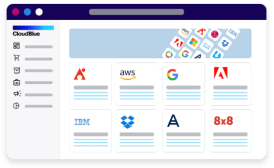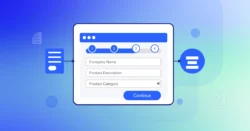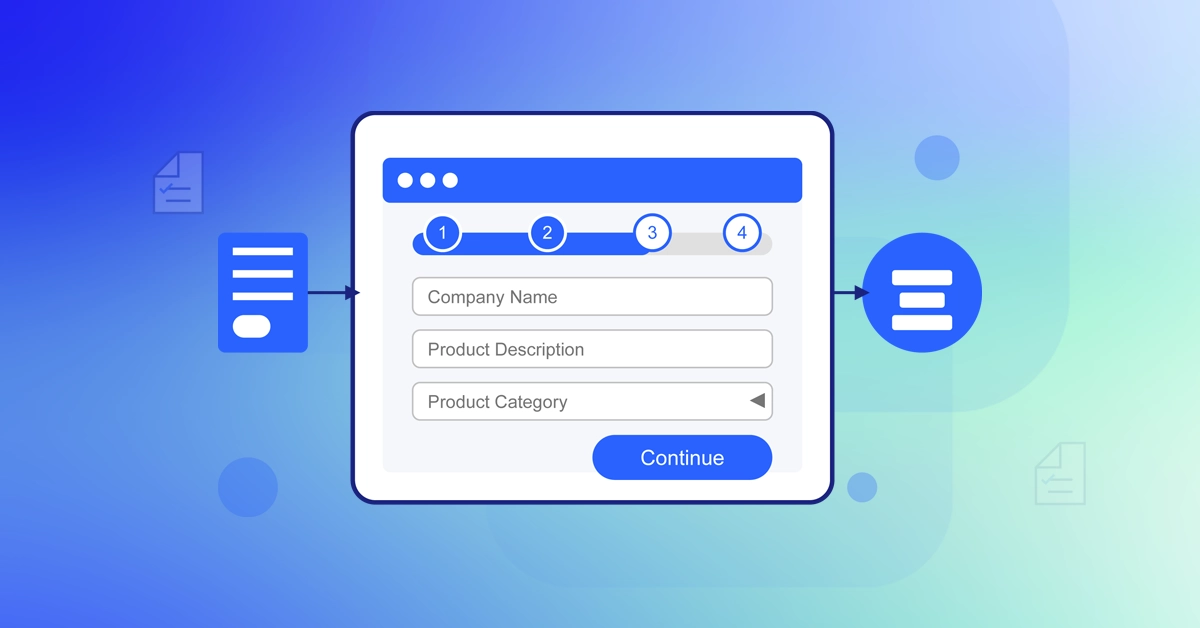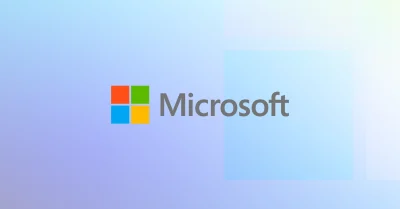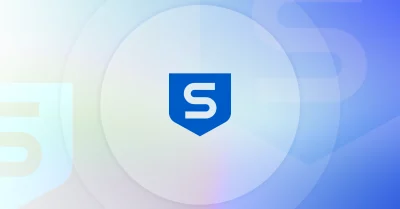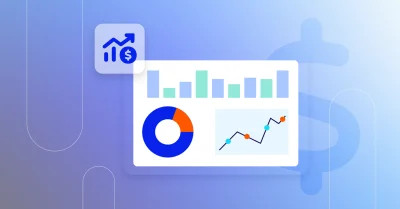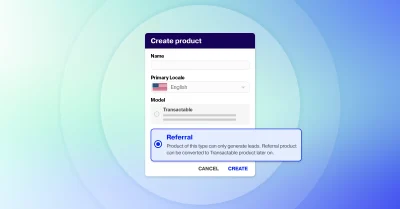The Need for Efficient Vendor Onboarding
It is well known service providers and marketplace operators are looking for additional sources of revenue from their traditional offerings and also looking to capitalize on their deep relationships with their existing customer segments.
Expanding their digital product catalog or diversifying software product offerings from third-party suppliers is a great example of how these service providers can add to their traditional offerings and realize additional streams of revenue, as well as strengthen their relationships with their customers.
Building a Flexible Partner Strategy
For service providers to find product offerings that resonate with their customer base, there needs to be a disciplined and formal approach to partnering. There is also some trial and error to this process.
A partner offering which initially looks attractive in the marketplace may prove itself unviable once it is launched. Add to this the dynamic nature of customer preferences and requirements, and it pays to have a partner onboarding strategy flexible enough to retire offerings no longer relevant to the market.
Overview of Key Steps
At a high level, the onboarding of new third-party products and vendors into your provider catalog requires the following steps:
- Recruitment of vendor partners
- Partner discovery
- Partner business planning
- Design of partner integration
- Development of partner integration
- Deployment
- Ongoing sales acceleration
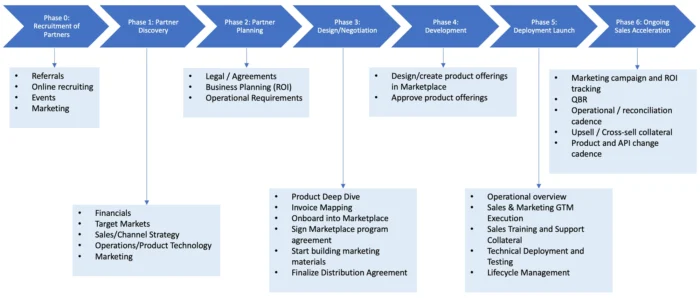
Each of these steps requires the engagement of different teams within the organization, such as Product and Marketing teams, Sales teams, billing teams and technical/IT teams. It is important that if your strategy is to onboard many partners quickly, you have all these teams engaged from the start.
Step-by-Step Guide to Vendor Onboarding
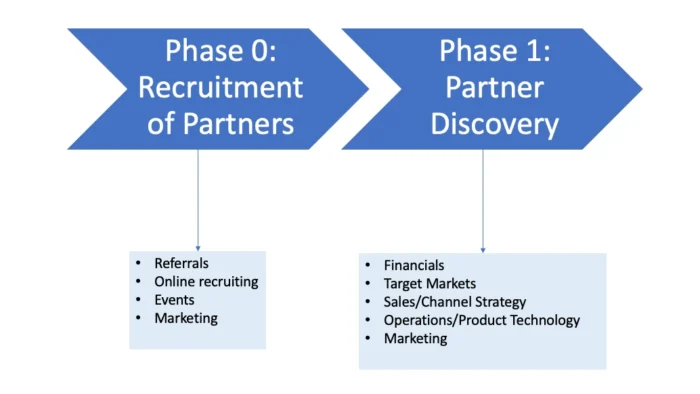
Phase 0: Partner recruitment
This is where new partners are attracted to your program and “sign up” and provide the initial required information and documentation. While partners come from numerous channels, the majority are sourced via referrals, clients, online campaigns, conferences, events, and marketing activities.
There is a need to keep track of partners throughout this process in some partner relationship management (PRM) platform. The advice here is only add fully qualified partners to your Marketplace platform, and until they are qualified, they should live in your PRM only. It goes without saying not all partners will reach the “fully qualified” finish line.
Phase 1: Partner discovery
A partner that has been recruited must first be “discovered,” regarding their fit to your B2B partner program. Think of this like the short-listing and interview stage, where a deep dive is conducted on the company, their financials, their operations, security posture, target markets, product offerings, marketing and other capabilities or constraints.
Partners are knocked out at this stage due to any one or more of several reasons: lack of product fit, weak financials, target market misalignment, cumbersome operations, or sales, channels and marketing strategies that can be unviable. An example is a vendor partner that only sells via a two-tier distributor, whereas you are looking for a direct relationship.
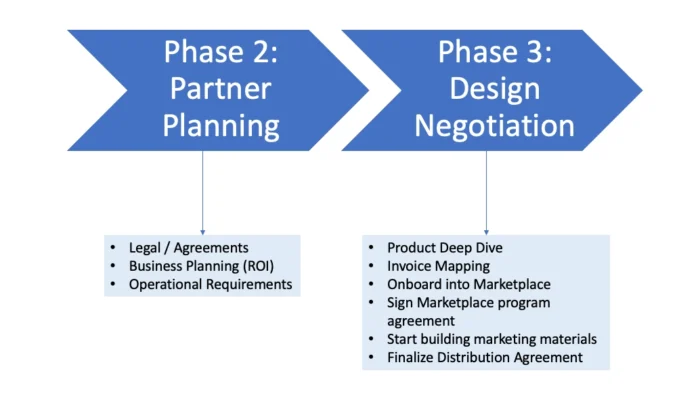
Phase 2: Partner planning
This step is where a more formal ROI plan is devised, to understand the return that adding this partner can bring. A common mistake here is to overestimate the success of an existing product in the marketplace via a new channel (i.e., the one you are setting up).
While previous sales via other channels can provide useful data points, a common pitfall is to overestimate the success of the product in the initial stages of setting up your new channel. Customer behaviors are not always easy to change. This step is also where the lawyers get involved on both sides, and legal agreements such as partner program agreements and distribution agreements for each target market are drafted and reviewed.
Phase 3: Design/Negotiation
The legal agreements and contracts—program and distribution—are finalized and signed in this step. The specific products to be listed on the Marketplace are specified in detail: product collateral, descriptions, SKUs, attributes, language locales, pricing models and currencies, billing models and so on.
The invoice from the vendor partner must be reviewed at this stage to understand how they will invoice you for the products sold each period, and how this invoice will map to your settlement and reconciliation system. This is the step where the vendor partner is onboarded into the Marketplace platform and gets access to the platform to define their product offerings.
In choosing a Marketplace platform it is important to look for the following capabilities:
- Vendor and catalog management – the ability for vendor partners to self-onboard themselves and their products
- Commerce management:
- The ability to sell different types of products such as one-time, recurring subscriptions, consumption-based
- The ability to bill for all these types of products
- The ability to flexibly bundle product offerings without significant development
- The ability to sell in multiple currencies, multiple languages, multiple regions
- The ability to perform complex operations on product holdings (also known as assets or subscriptions) such as refunds, cancellations, renewals, upgrades, downgrades, migrations
- The ability to sell direct to customer, as well as through reseller channel(s)
- The ability to reconcile vendor partner transactions with marketplace transactions
- Data analytics – the ability to provide insights into the marketplace and its performance
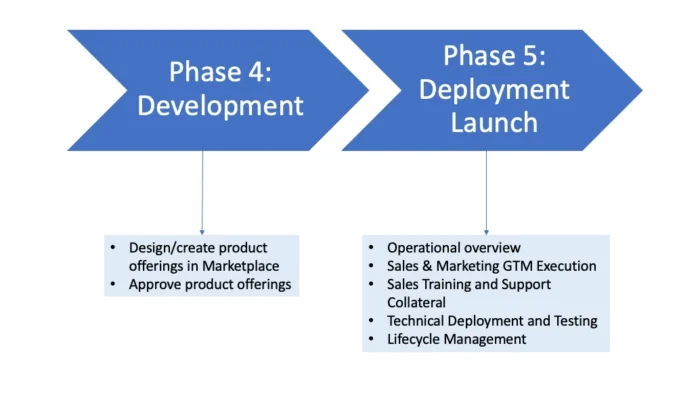
Phase 4: Development
Here, the partner can access the Marketplace platform directly and define their product offerings in a self-service manner. They can define product descriptions, product images, product videos, product documents, product attributes, product categories and classes, product variants, language locales, product pricing, product billing models and other product templates.
Once the product is defined, the partner can list the product to any number of marketplaces (e.g., USA, Canada, Mexico) which have already been pre-defined in the Marketplace platform. You, as the Marketplace operator, can also access the platform to review and approve the vendor partner’s listing.
Phase 5: Deployment launch
Depending upon how many products you are trying to launch simultaneously, this phase can be lengthy, as each product will need to be tested first for each supported marketplace use case (new order, change, cancel, renew, suspend, resume, migration and so on). Your chosen marketplace platform must have built-in support for the testing phase of the partner launch.
Once a product has been tested thoroughly, you must be able to move it easily into production without much effort. If the product orders are to be manually fulfilled by Operations teams, then this is the step to test out those processes. Documenting these manual processes is also important at this stage.
If product orders are to be automatically fulfilled, then this is the step to test that the fulfillment automation works as expected. This is an especially important step because you want to make sure all your operational processes for fulfilling product orders are solid before launching the product in the marketplace.
Training your Sales teams to sell the product, as well as executing your marketing and GTM plans, belong in this step. Without appropriate training in selling the product, your Sales team will lean on selling what they have always sold. Ensure that product lifecycle management is clearly defined in this step, both the process for updating and releasing newer versions of the product and how to remove end-of-life products from the marketplace.
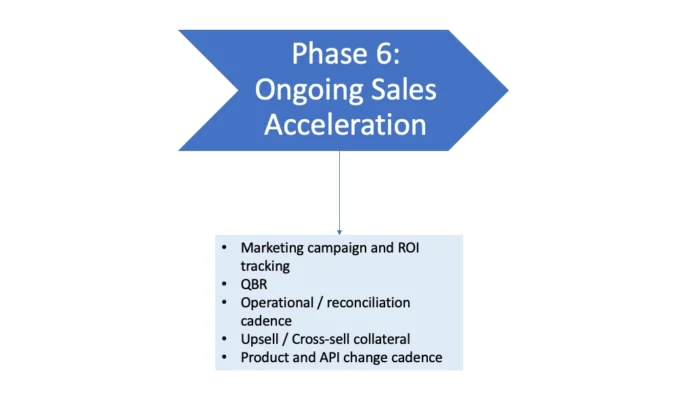
Phase 6: Ongoing sales acceleration
The ongoing phase regularly tracks and monitors the following:
- The performance of the products in the marketplace and specific marketing campaigns
- The health of invoicing and reconciliation, ensuring there are no revenue leaks nor any over-charging of customers
- Keeping abreast of product upgrades as well as technical API upgrades as necessary
If a partner and their product have already been onboarded into the Marketplace platform, then this will cut down on the time for you to run through these steps. The steps cannot be avoided altogether though.
Final Thoughts
In conclusion, it is worthwhile treating your SaaS partner onboarding program as a well-defined and important “living” business process. The entire process may take several months for a large vendor partner with many complex products, or as quick as a couple of weeks for a simple product that has already been pre-onboarded to the Marketplace platform.
Apart from your Marketplace platform, you will need a PRM tool that keeps track of the stage of each partner in their onboarding journey, and it is worthwhile to engage upfront with all the respective teams in your organization that will need to participate in this process.

